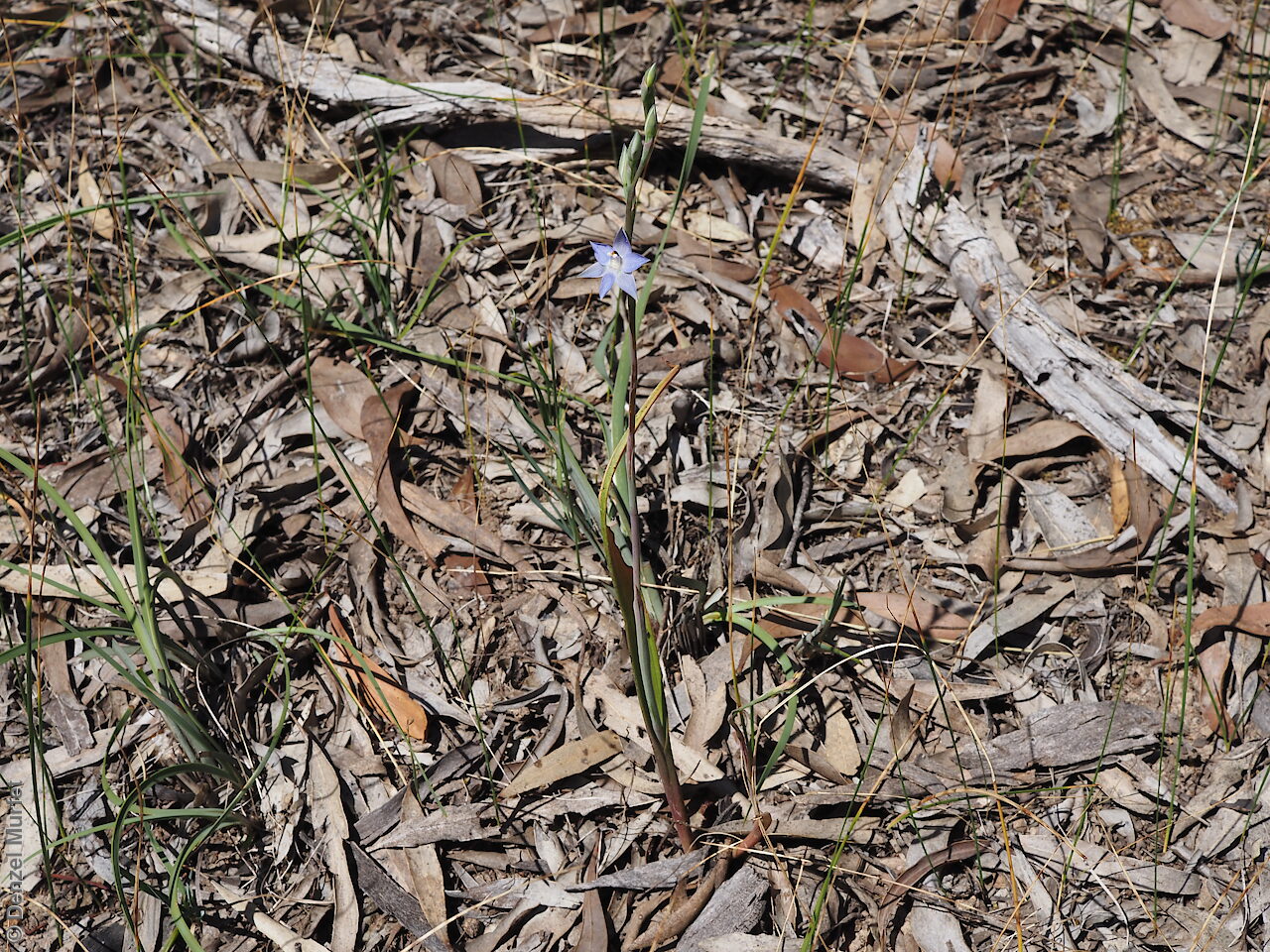
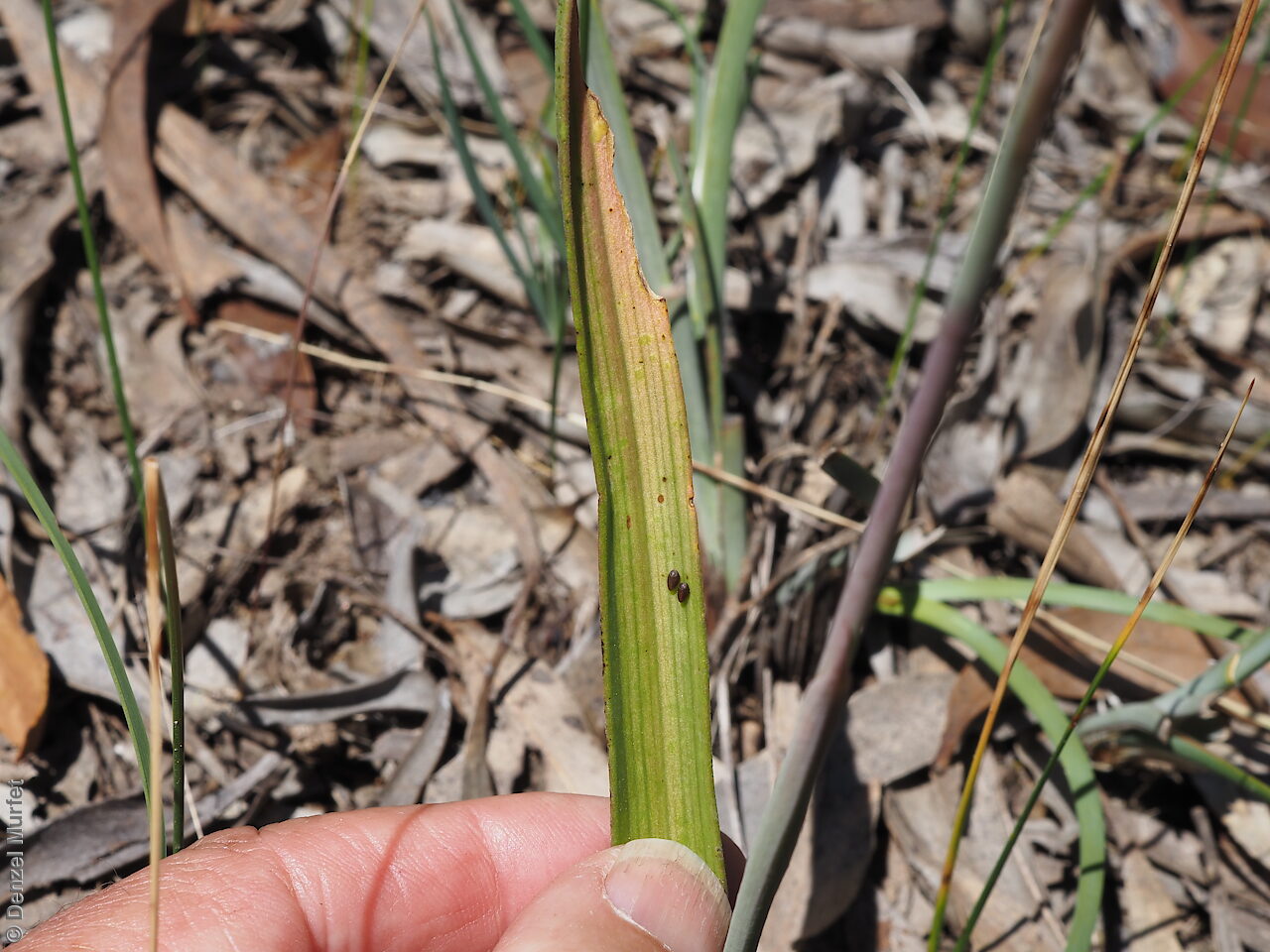
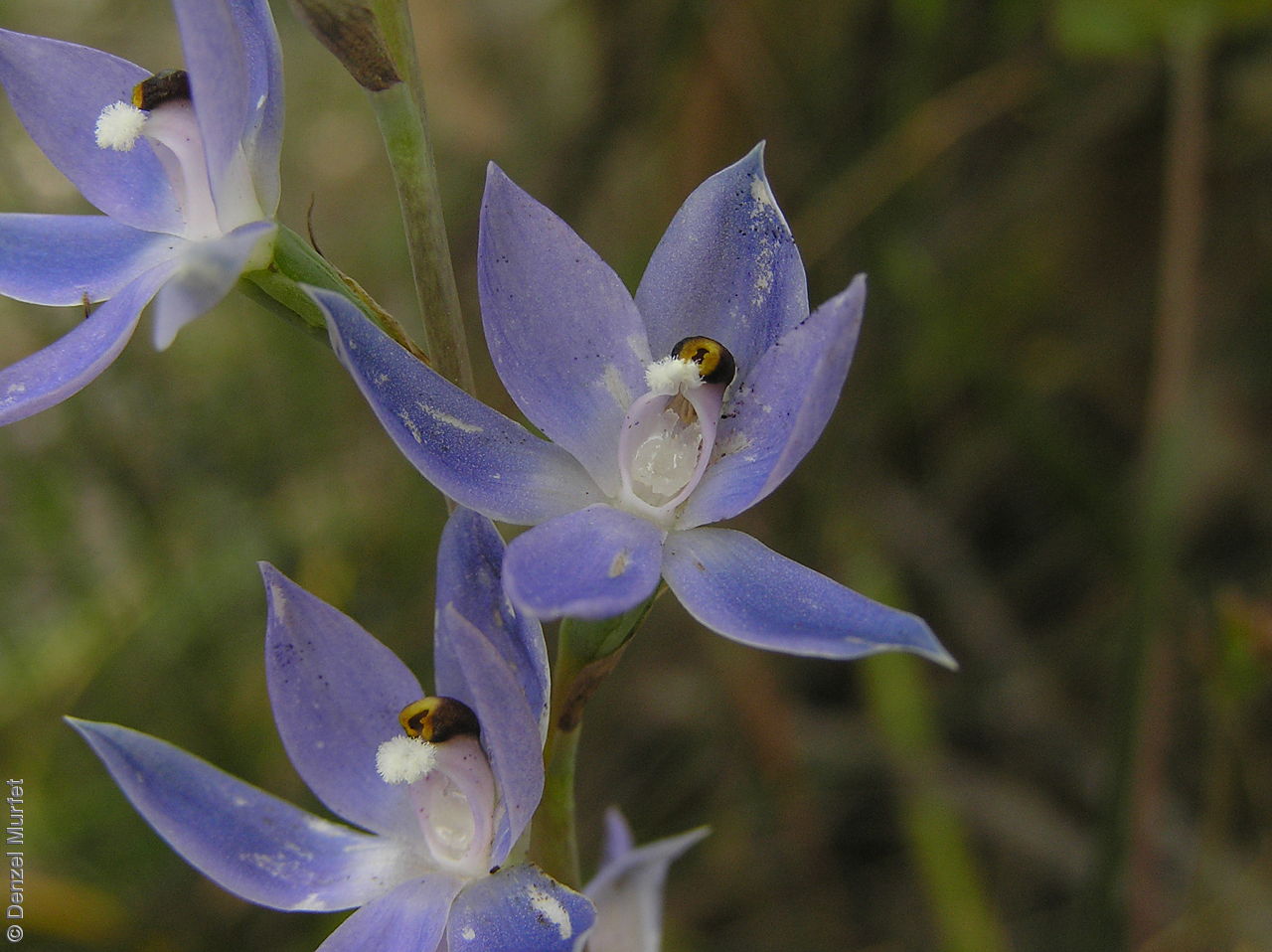
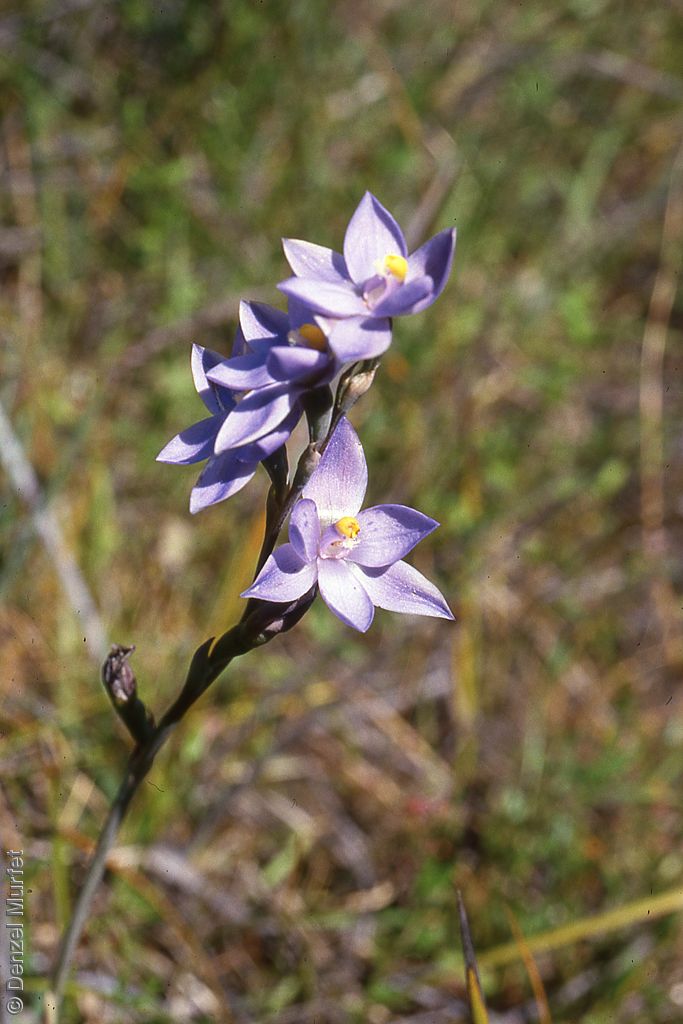
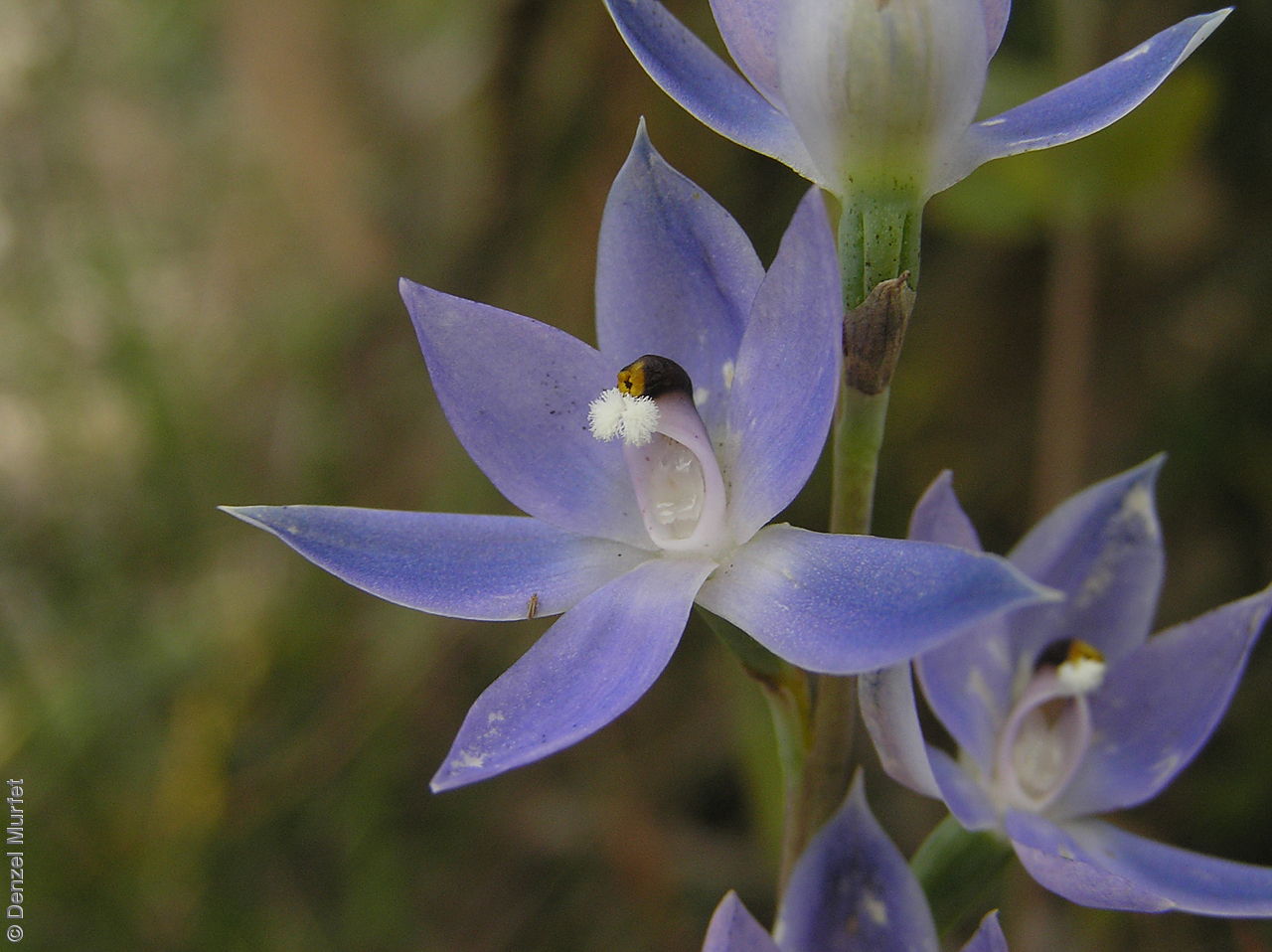
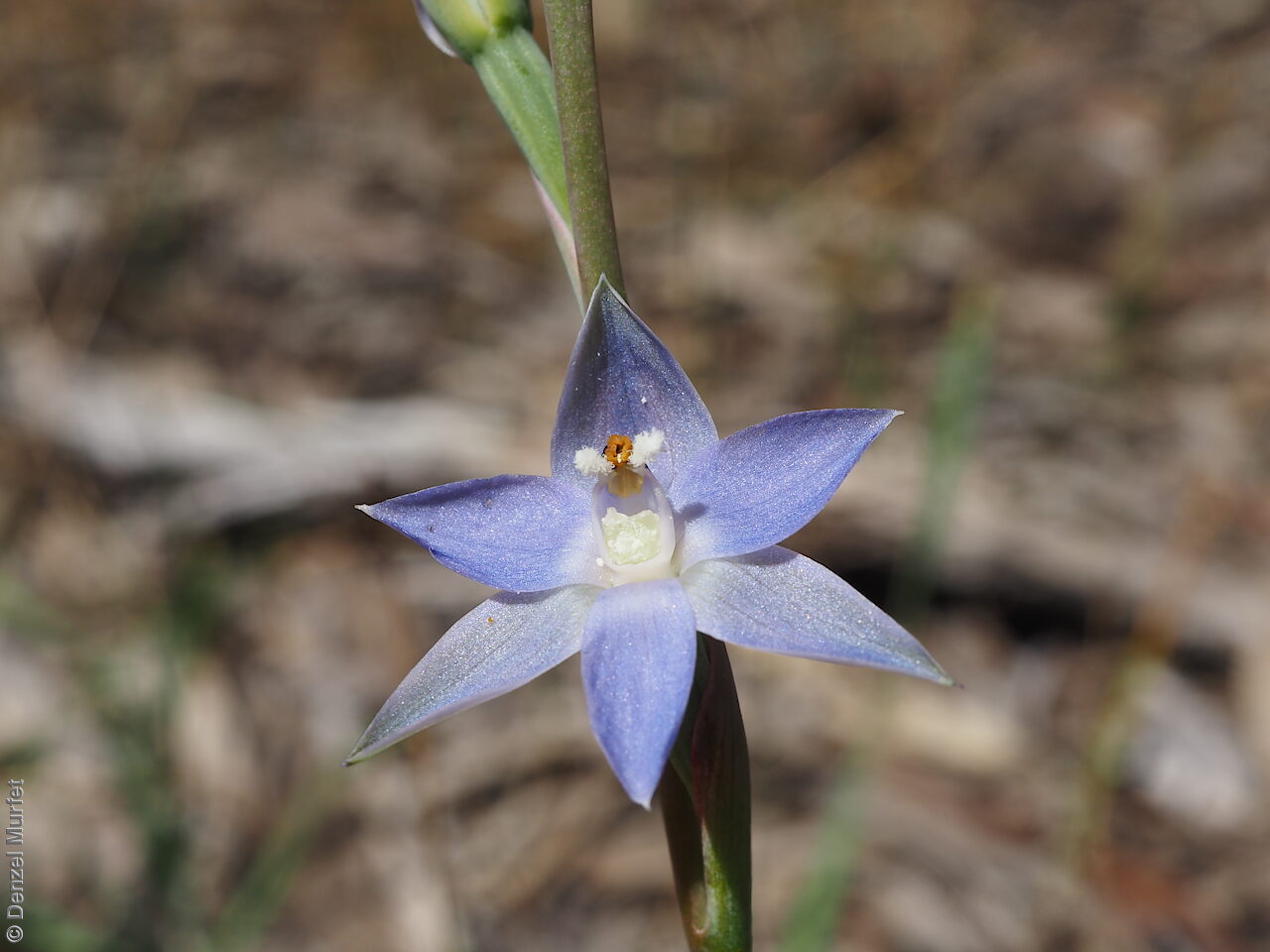
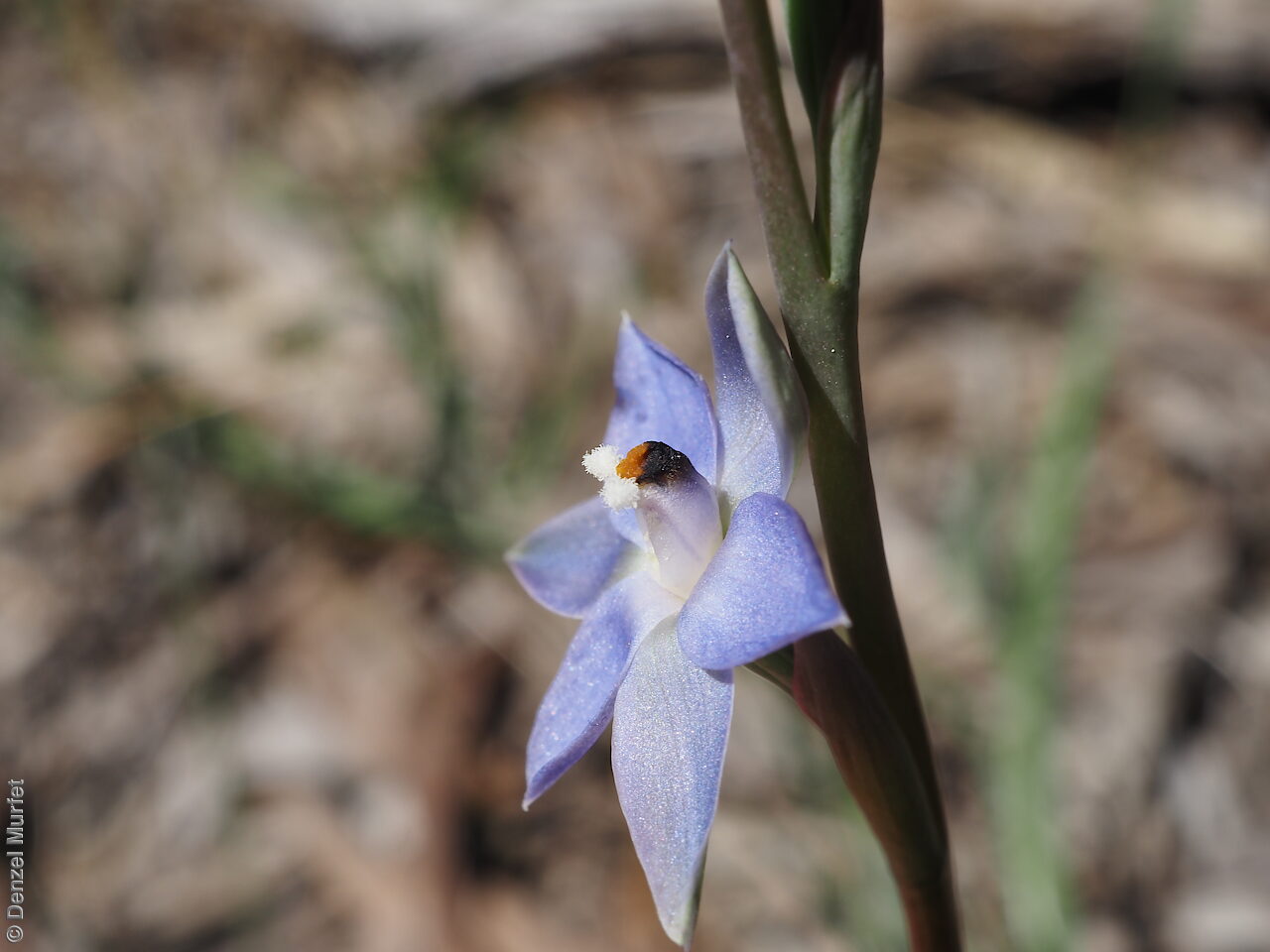
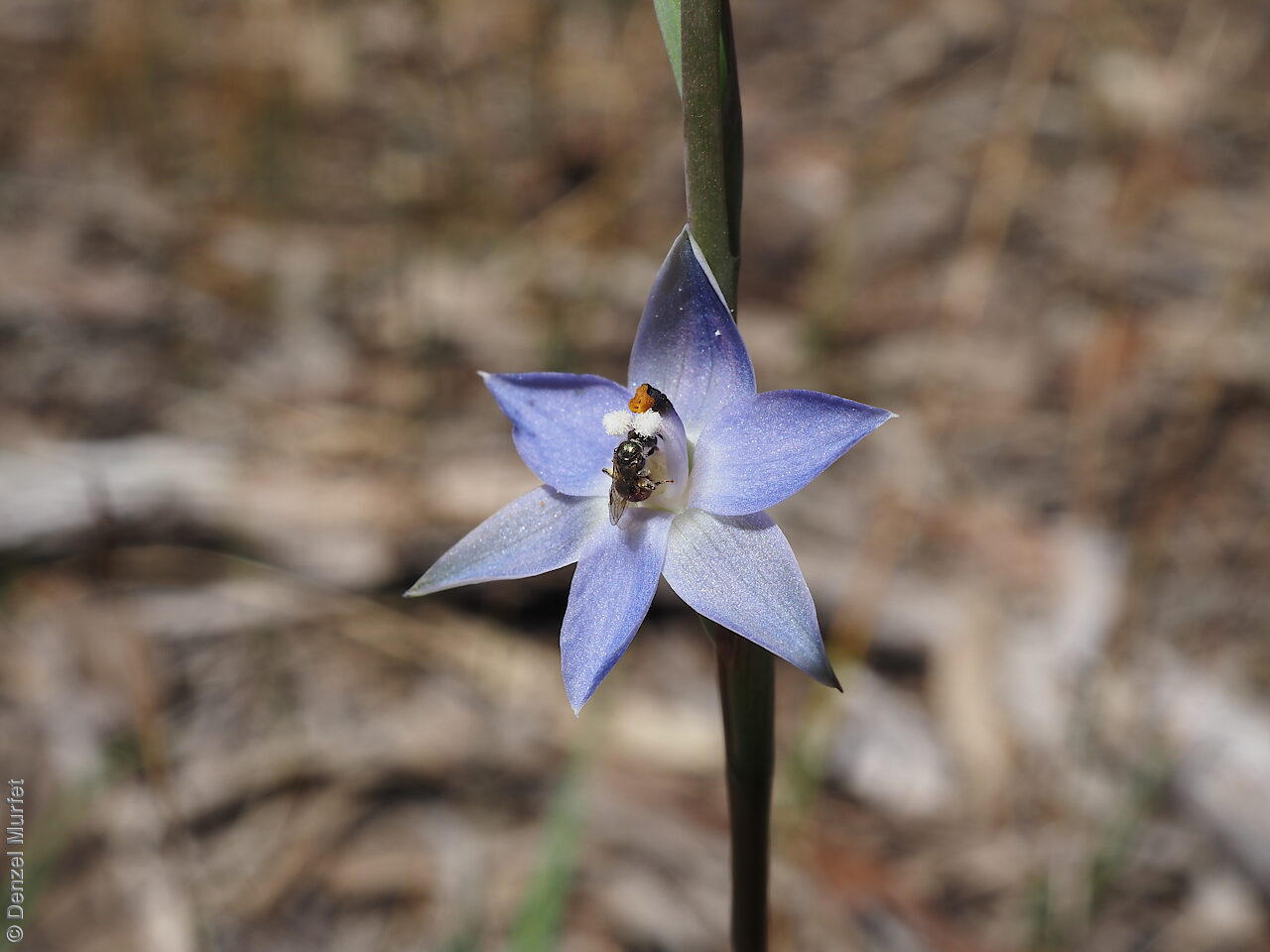
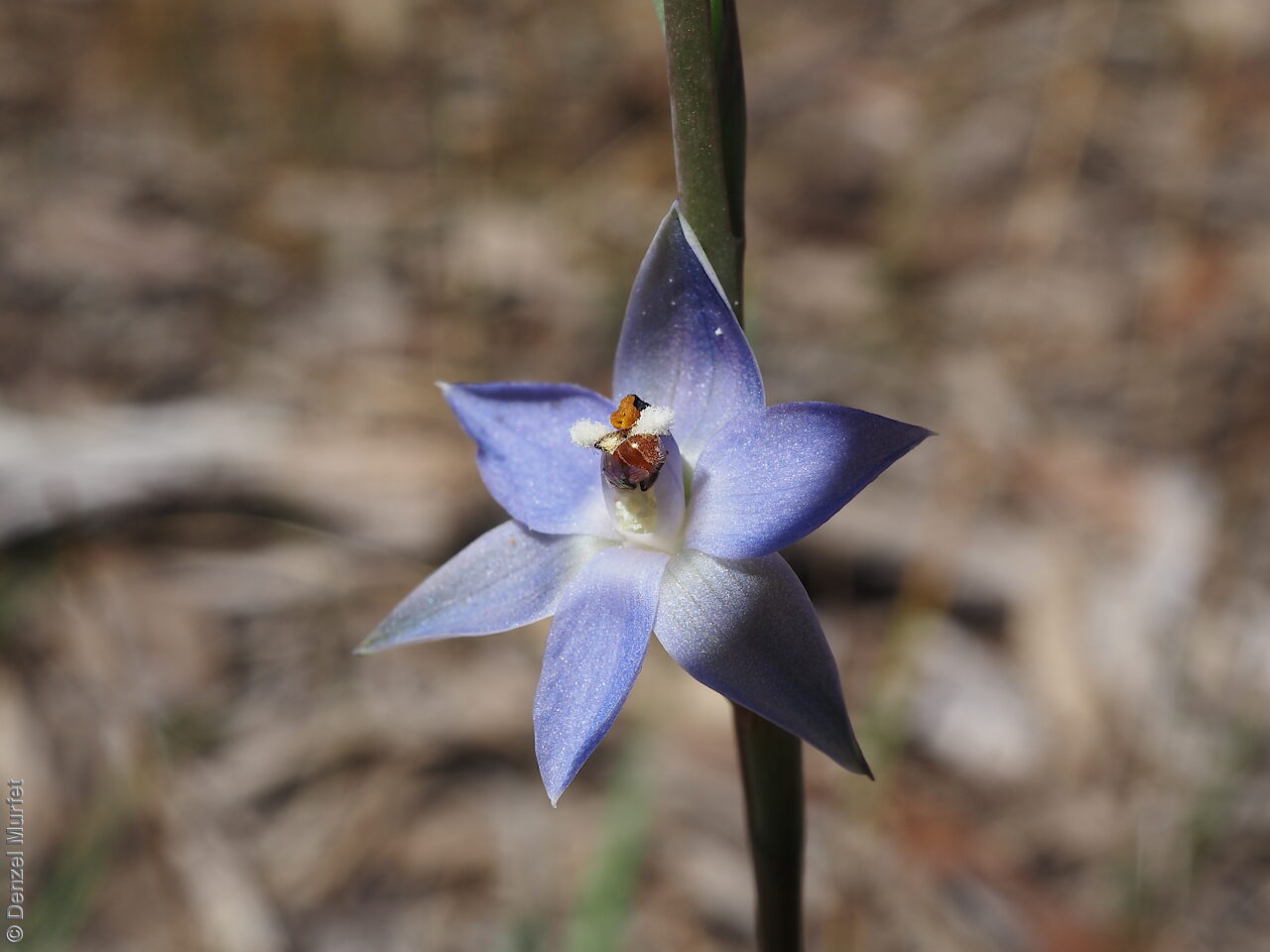
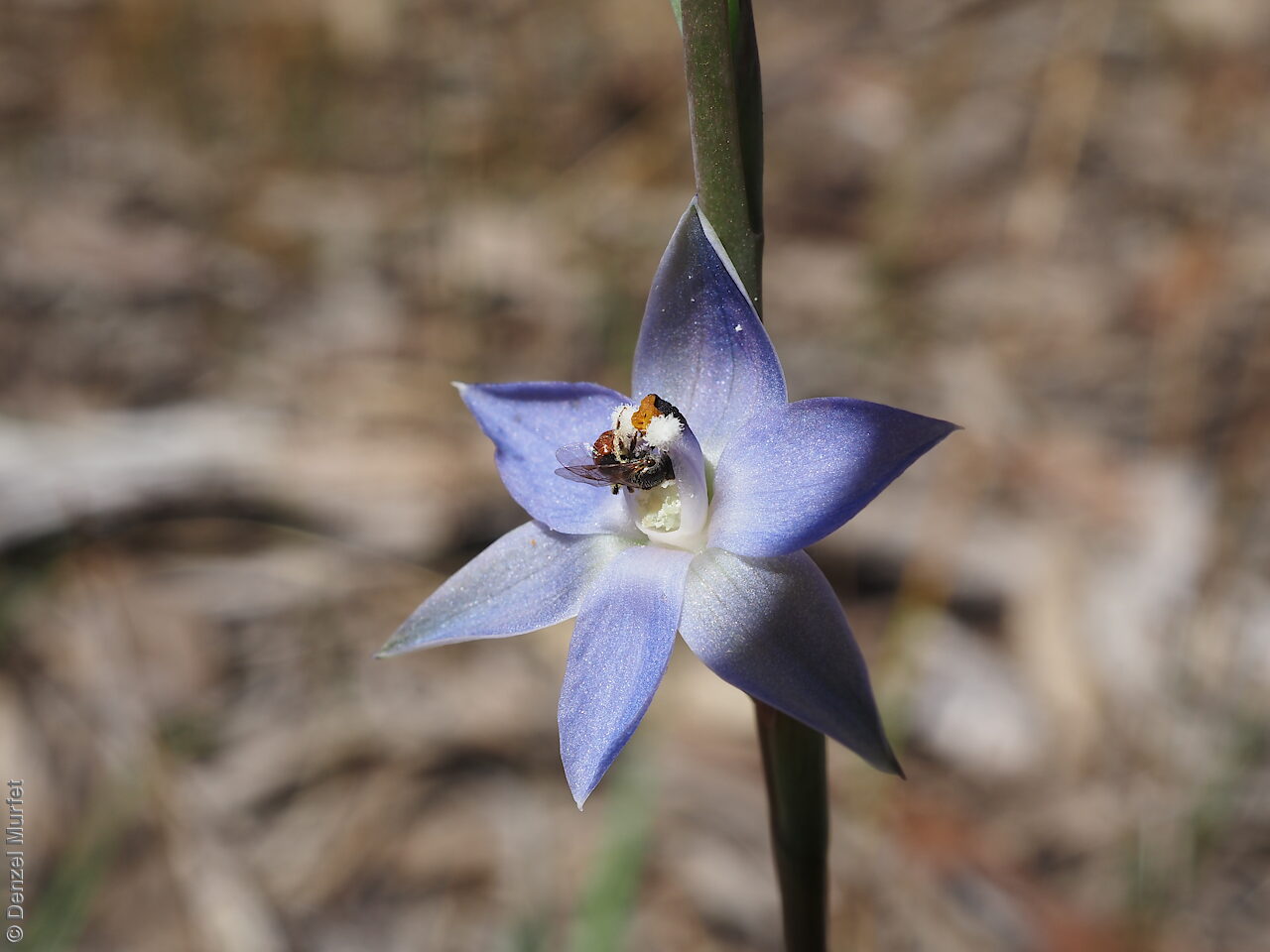

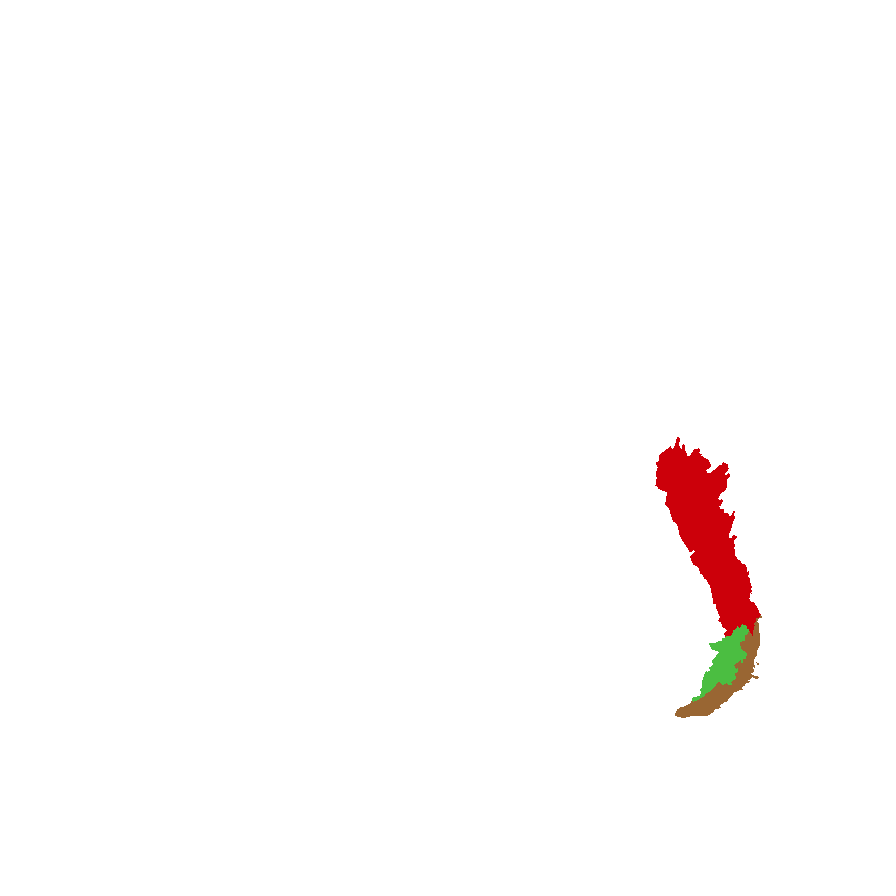
Common names
Leafy Sun-orchid
Slender Sun-orchid
Etymology
Thelymitra from Greek 'thelys' meaning a bishop and 'mitra' meaning a headwear, hat, hence a bishop’s mitre, referring to the sometimes plumed or decorated wings of the column, which is usually produced behind and over the anther in a hood-like projection. Bracteata from the Latin 'bracteatus' meaning with bracts, referring to the species very prominent sterile and fertile bracts.
Distribution and status
Found in southern Flinders Ranges, Mount Lofty Ranges, Kangaroo Island and the South-east in South Australia, growing grassland, woodland and open forest in open aspect. Also founding in Victoria and Tasmania. Native. Uncommon in South Australia. Very rare in Victoria and Tasmania.
Herbarium regions: Flinders Ranges, Northern Lofty, Murray, Southern Lofty, Kangaroo Island, South Eastern, Green Adelaide
NRM regions: Adelaide and Mount Lofty Ranges, Kangaroo Island, Northern and Yorke, South Australian Arid Lands, South Australian Murray-Darling Basin, South East
AVH map: SA distribution map (external link)
Plant description
Terrestial orchid with linear-lanceolate leaves to 45 cm long and 15 mm wide, erect, leathery, dark green with a purplish base. Flowering spike rather stout, straight, straw-coloured to purplish, to 100 cm high with 5-30 pale blue inside and greenish outside flowers, opening tardily on warm to hot days. Flowering between late September and early December. Fruits are brown papery obovoid capsule to 25 mm long and 8 mm wide, ribbed.
Seed collection and propagation
Collect seeds between December and February. Collect fat capsules as they start to dry and turn brown. Pods will split and release the seeds quickly and will require monitoring. To increase the chances of collecting mature pods, it is recommended that a small breathable bag (ie. Organza bags) be used to enclose the developing capsules. Place the capsules in a container that will hold fine seeds and leave to dry for a few weeks or until the capsule split. Then carefully hold the capsule and tap it gently to release the seeds. Store the seeds with a desiccant such as dried silica beads or dry rice, in an air tight container in a cool and dry place or in liquid nitrogen.